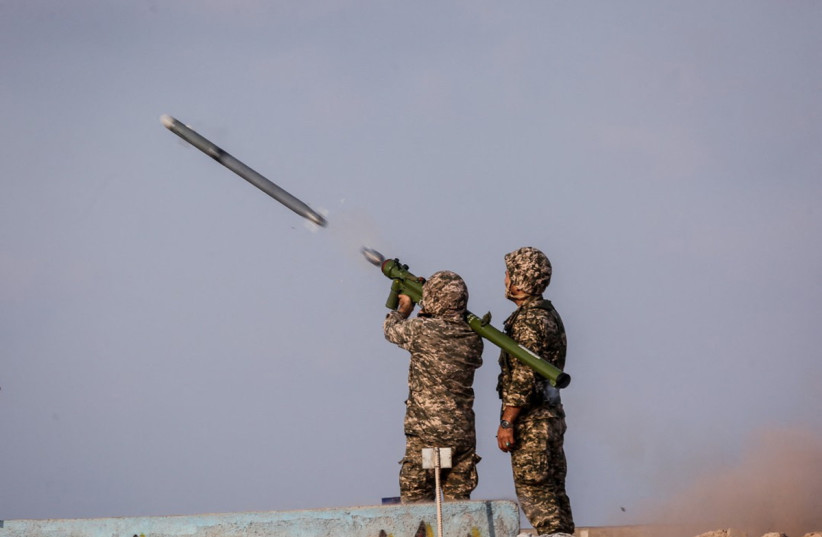Two drones on Monday targeted al-Asad air base in Iraq, a facility where US personnel are located. It came about 24 hours after another drone attack targeted Americans in Baghdad.
The attack on Monday coincided with the anniversary of the US killing of IRGC Quds Force commander Qasem Soleimani; the drones had “revenge” written on them. The second attack appears to also be a message from Iran and its allies in Iraq.
Drones have increasingly been used by Iran and its proxies and allies in the region over the past year. This is the new preferred method to target US forces as well. Drones have targeted American personnel and facilities in Baghdad, as well as in Erbil in the Kurdistan Region. They have also targeted the Tanf garrison in Syria where US forces are located.
Washington has ostensibly ended combat operations in Iraq over the past two years. US forces are in Iraq at the invitation of the Iraqi government to advise and assist in defeating ISIS.
Over the past several years, pro-Iranian elements in Iraq have increased calls for the US to leave. These are the same groups linked to pro-Iranian militias and terrorists who attacked American forces after the 2003 invasion.

Although the pro-Iran groups, such as the Badr Organization, opposed Saddam Hussein, they also dislike the US. They worked with it pragmatically in the beginning, but then they began killing Americans.
The IRGC and its octopus-like influence in Iraq was influential in spreading EFPs in Iraq, a kind of explosive, and killing numerous American troops until 2011 when the US left. It returned to Iraq to help fight ISIS, and American and Iranian advisers there were ostensibly on the same side. This also coincided with the Iran deal in 2015, and tensions were deferred until 2017.
Then pro-Iran groups began targeting Americans. This grew in May and June 2019 and expanded to include attacks on a dozen US facilities in Iraq. In response, the US withdrew from most exposed posts and concentrated its forces at al-Asad air base; Union III, the embassy and airport in Baghdad; and Erbil, where Washington is building a giant consulate.
IRAN THEN turned its attention to targeting these areas. After the US killed Soleimani in January 2020, in response to an attack on the US Embassy, Iran fired ballistic missiles at al-Asad air base. Drones are now the preferred method. But these drones are small, and so far there have not been casualties.
However, drones are more difficult to shoot down and can cause more havoc than 107-mm. rockets, the previous weapon that Iranian militias used in Iraq. Drones can target a specific location, as they did in Erbil, attacking what US media said was a CIA facility.
US counter-drone technology, which is now included in the C-RAM system at al-Asad air base, apparently shot down the drones, or the drones crashed before they reached their target, reports indicate.
Nafiseh Kohnavard, a BBC journalist who covers Iraq, reported on the US-led coalition’s response to Monday’s attack.
In a tweet, she quoted a coalition official as saying: “While we have ended our combat mission, we maintain the inherent right of self-defense. We maintain a minimal footprint on Iraqi bases – the coalition no longer has its own bases in Iraq.”
The drones used in the January 4 attack appear slightly more sophisticated than the ones used the day before. These types of drones have been trafficked around the region: to the Houthis in Yemen, Hezbollah in Lebanon and pro-Iran groups in Syria and Iraq. Blueprints were also sent to Hamas so they could build similar drones.
While the recent attacks in Iraq are not a game changer, and the drones are not very large, they pose a continued threat and show that Iran can attack at the time and place of its choosing.
Tehran often hides behind local militias to get plausible deniability. It is engaged in nuclear talks in Vienna, and it prefers the appearance that local “resistance” forces are attacking the US.
While it is true that groups such as Kataib Hezbollah and Asaib Ahl al-Haq want the US to leave Iraq, the hand of Iran and the Quds Force is often linked to these attacks.
